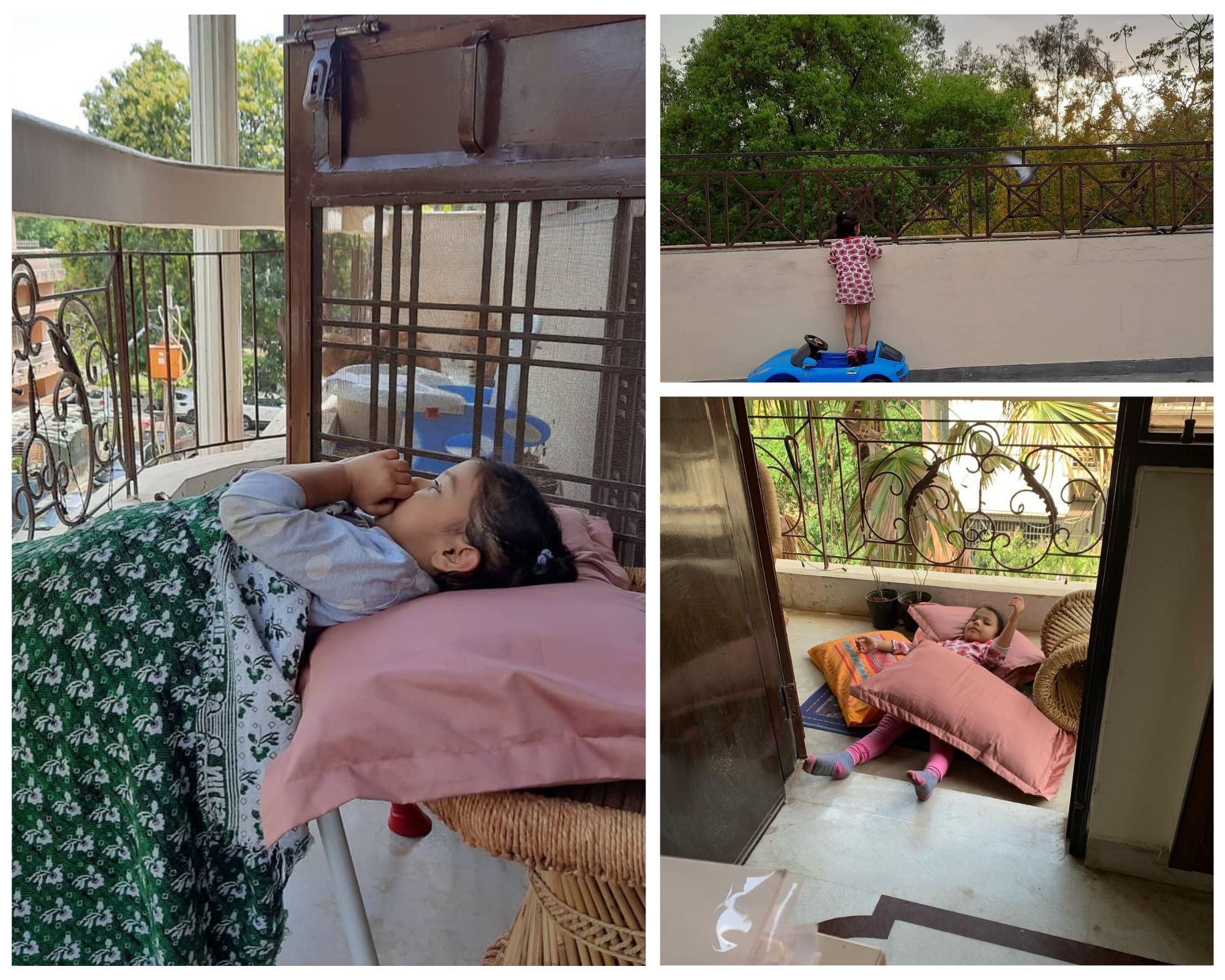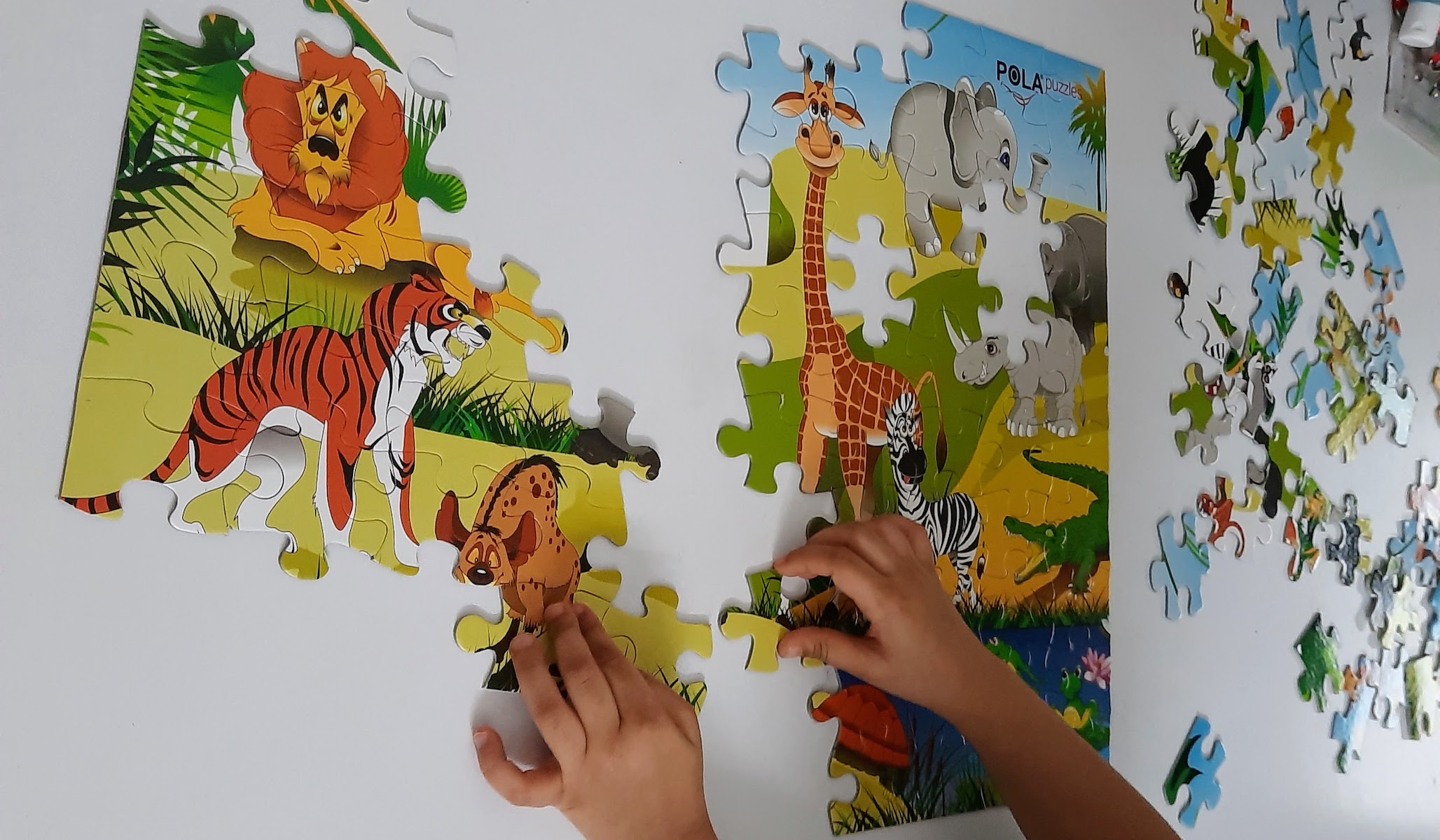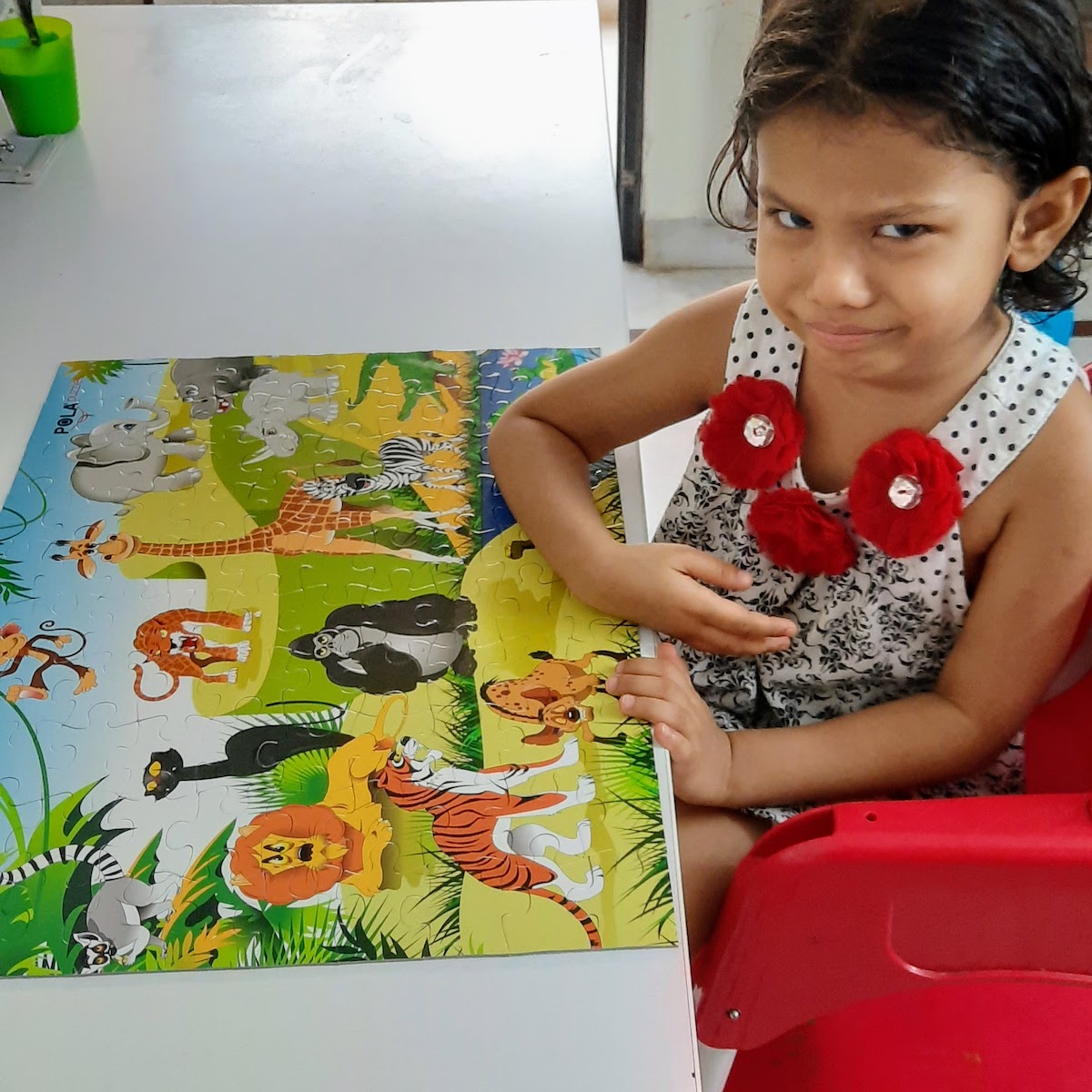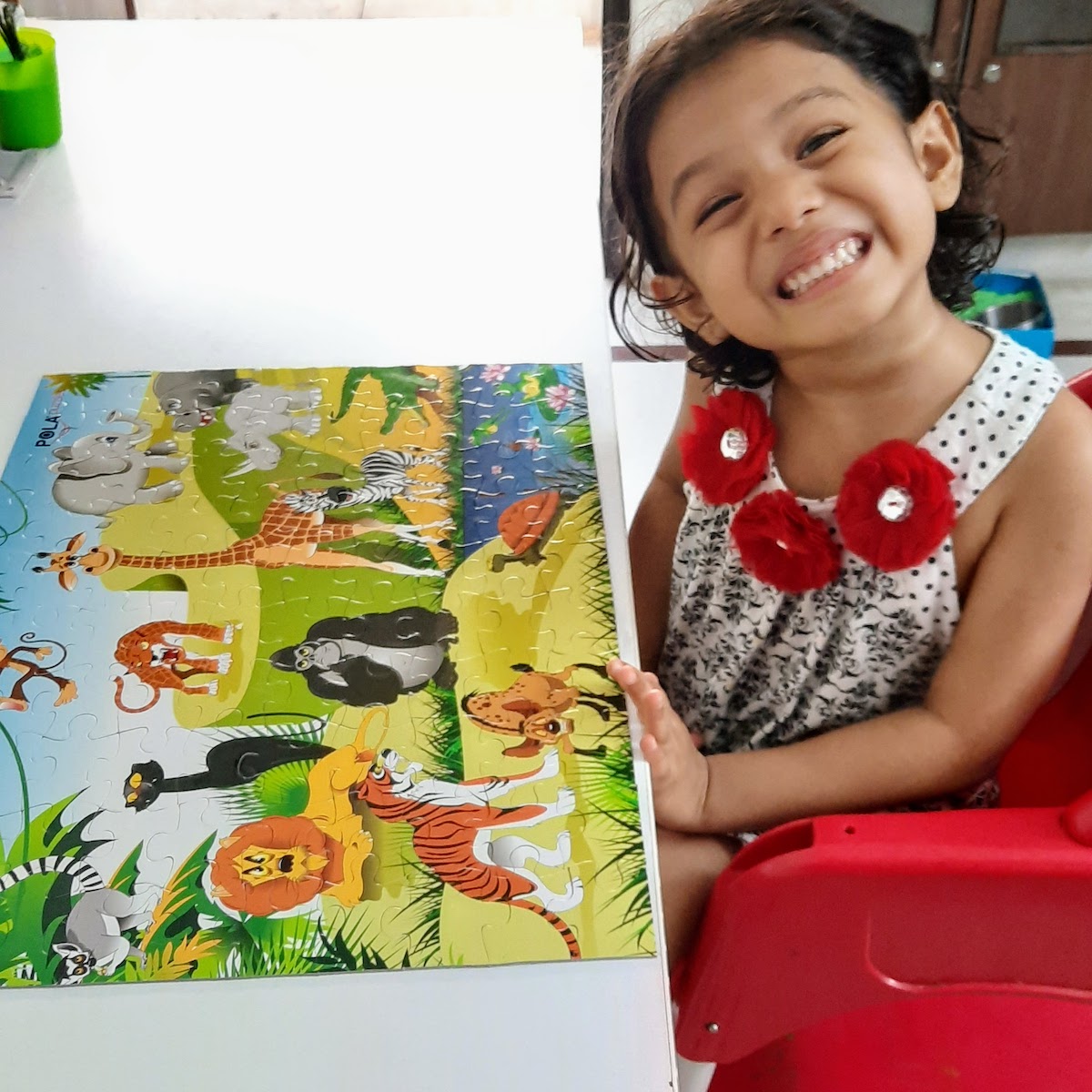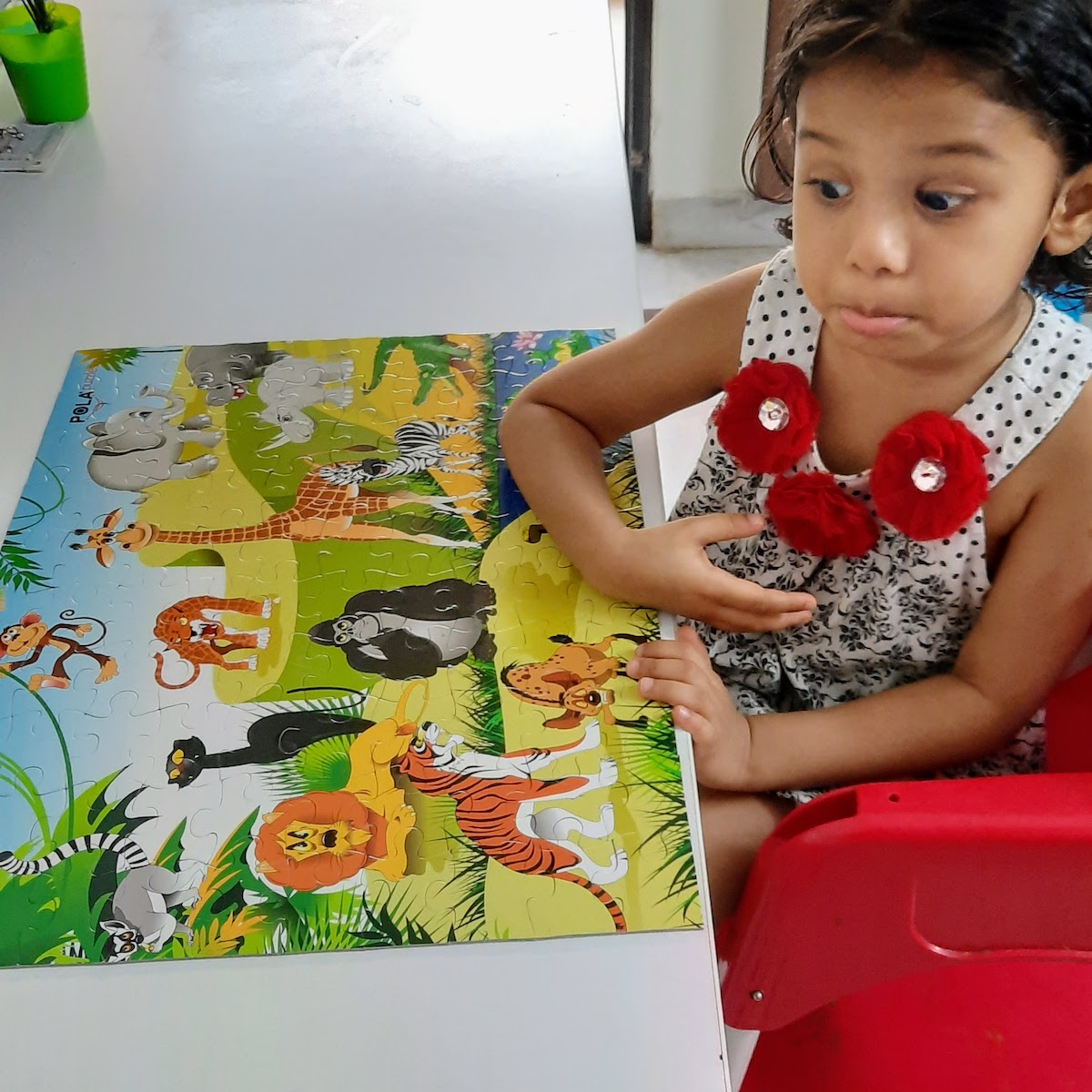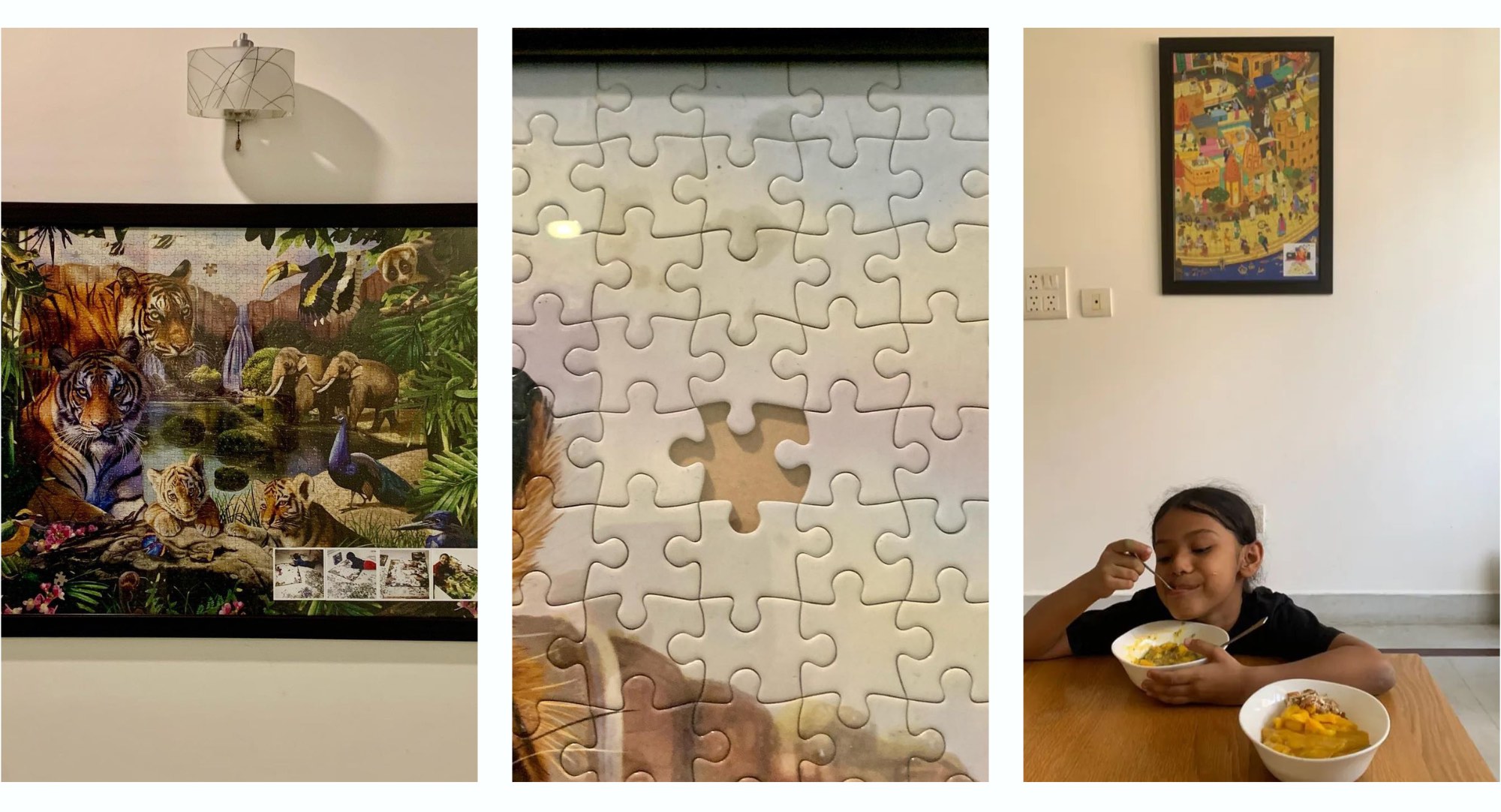
How to Teach Children to Solve Puzzles (Age 4-5)
Co-authored with Ritvvij Parrikh.
In 2020, the COVID-19 pandemic forced schools to close, transforming us into full-time caretakers. Living in Delhi, far from our support network in Mumbai, we faced new challenges.
Sabi had previously attended a daycare in Delhi, where she experienced intellectual and physical activities under the guidance of professional educators. With its closure, we became her primary source of learning and entertainment.
We explored activities like gardening, doodling, stargazing, coloring, and bird-watching.

While these were enjoyable, they weren’t sufficient for Sabi’s comprehensive growth, especially given our work commitments. We realized the importance of helping her relish her solitude and keeping her mentally engaged.
We focused primarily on doodling, reading, writing, karate, and puzzle-solving. This blog post delves into the last topic—integrating puzzles into a child’s life.
The Value of Puzzles
Solving puzzles enhanced Sabi’s understanding of visual communication and imparted critical skills:
- Commitment: Completing a puzzle can take days or weeks, instilling the virtue of perseverance in children.
- Strategic Thinking: A puzzle is a mosaic of mini-challenges that must be addressed piece by piece. This is similar to confronting obstacles in life, which should be handled one step at a time.
- Concentration: Puzzle-solving requires sustained attention, a challenging feat for youngsters.
- Resilience and Emotional Acumen: Puzzles can be demanding, but those challenging moments foster patience and emotional growth. Managing the ups and downs is a lifelong skill.
- Patience: Our world often emphasizes immediate outcomes, but puzzles teach youngsters to plan for the future and focus on incremental efforts, even if they seem mundane or strenuous.
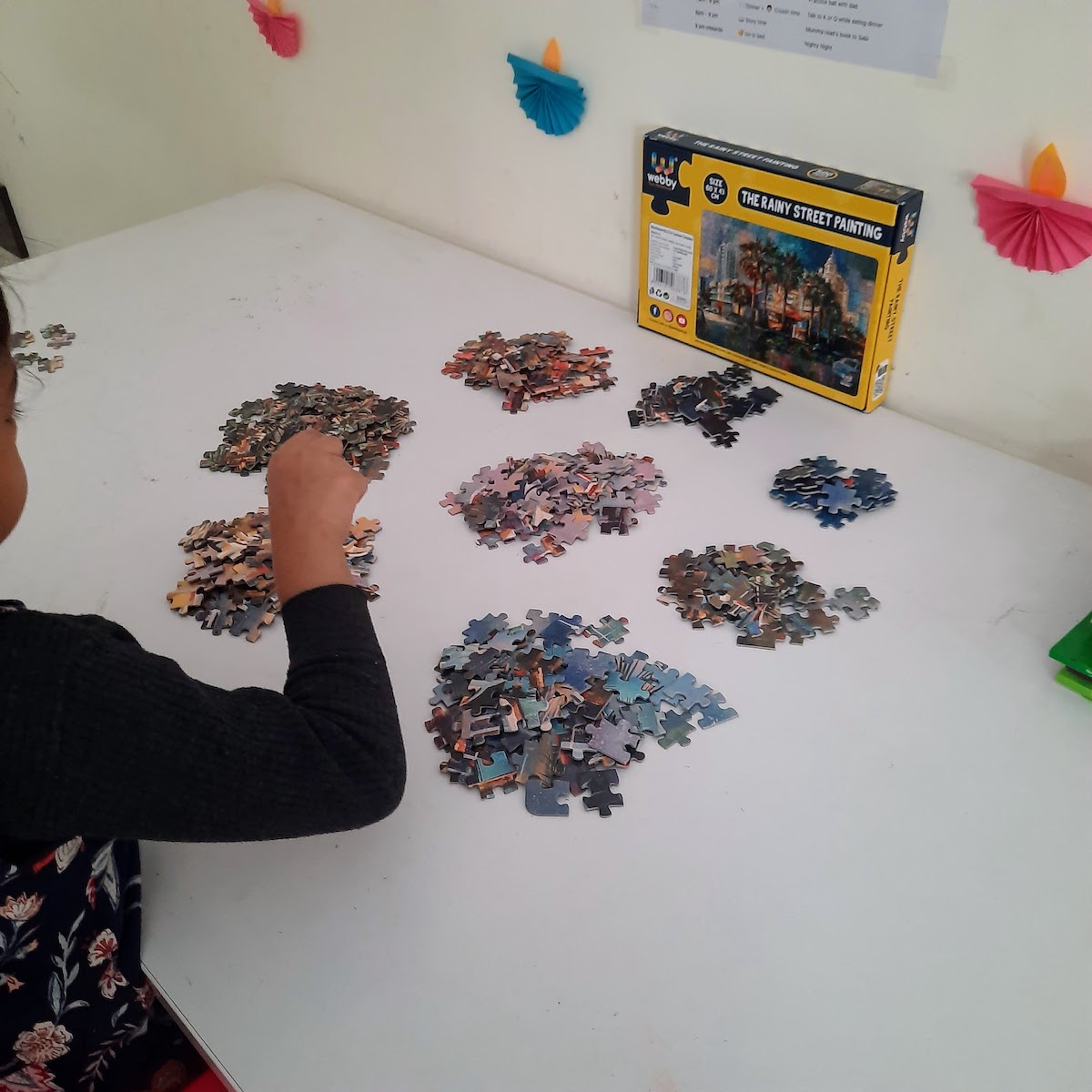
How it Panned Out
We got Sabi a 250-piece Snow White puzzle after she became interested in Disney classics. The challenge wasn’t just the number of pieces, but also the tricky designs and colors.
- Try 1: She completed 30% of it in two days, with our help for the rest.
- Try 2: Over three days, she completed 80% of it on her own, with our help for the last bit.
- Try 3: She took a break after starting.
However, by the end of the third try, she finished the entire puzzle on her own on day three. Her perseverance that day showed her growing grit.
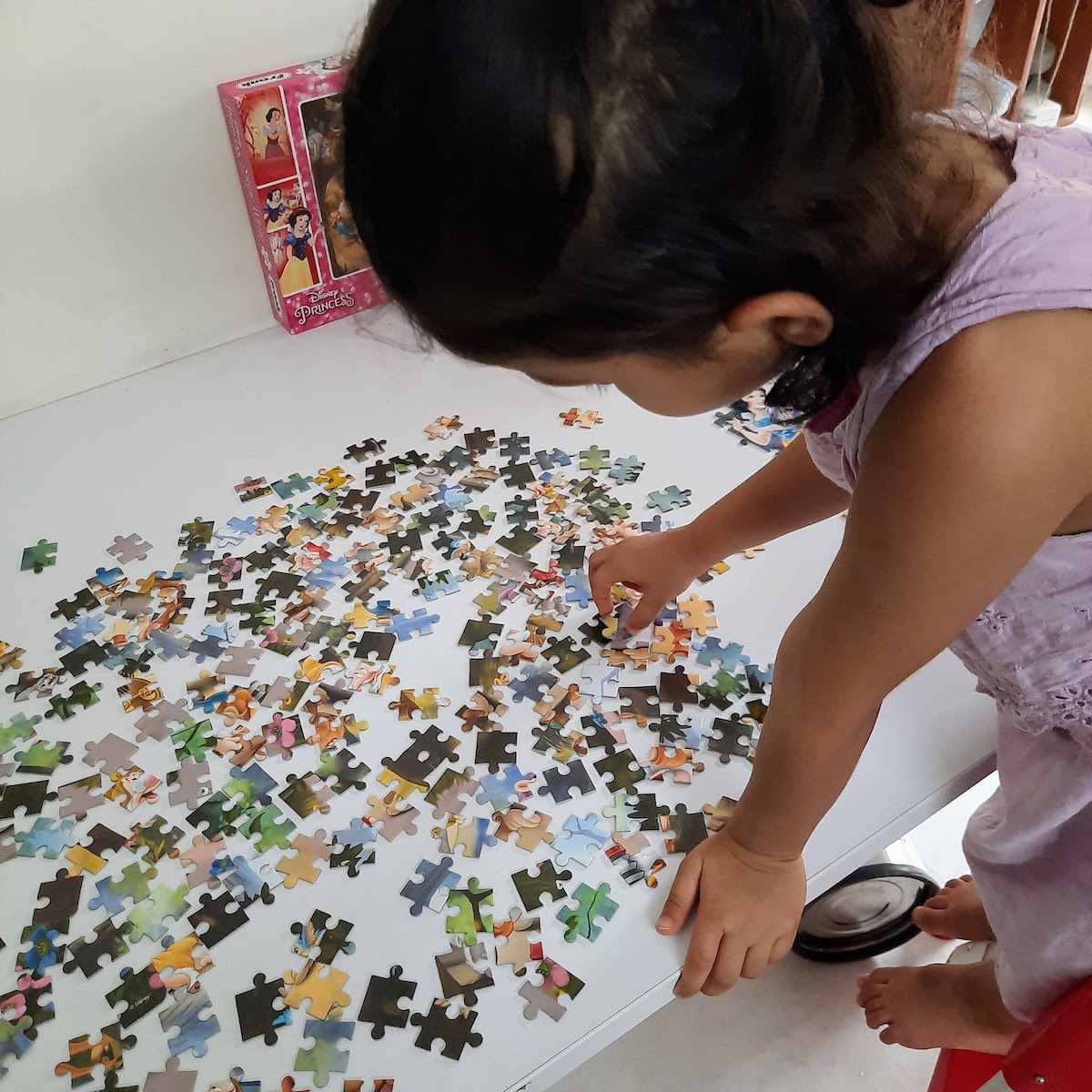
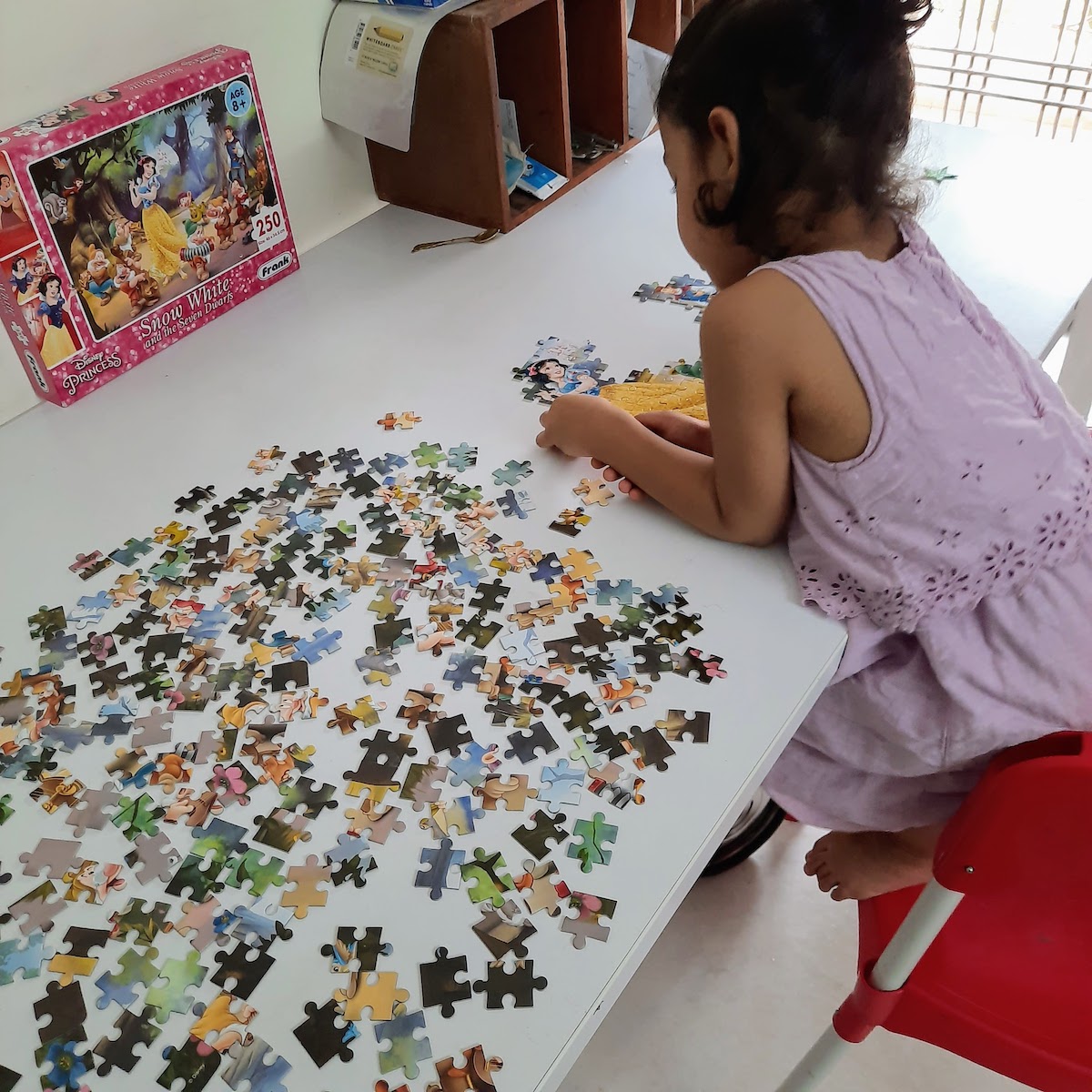
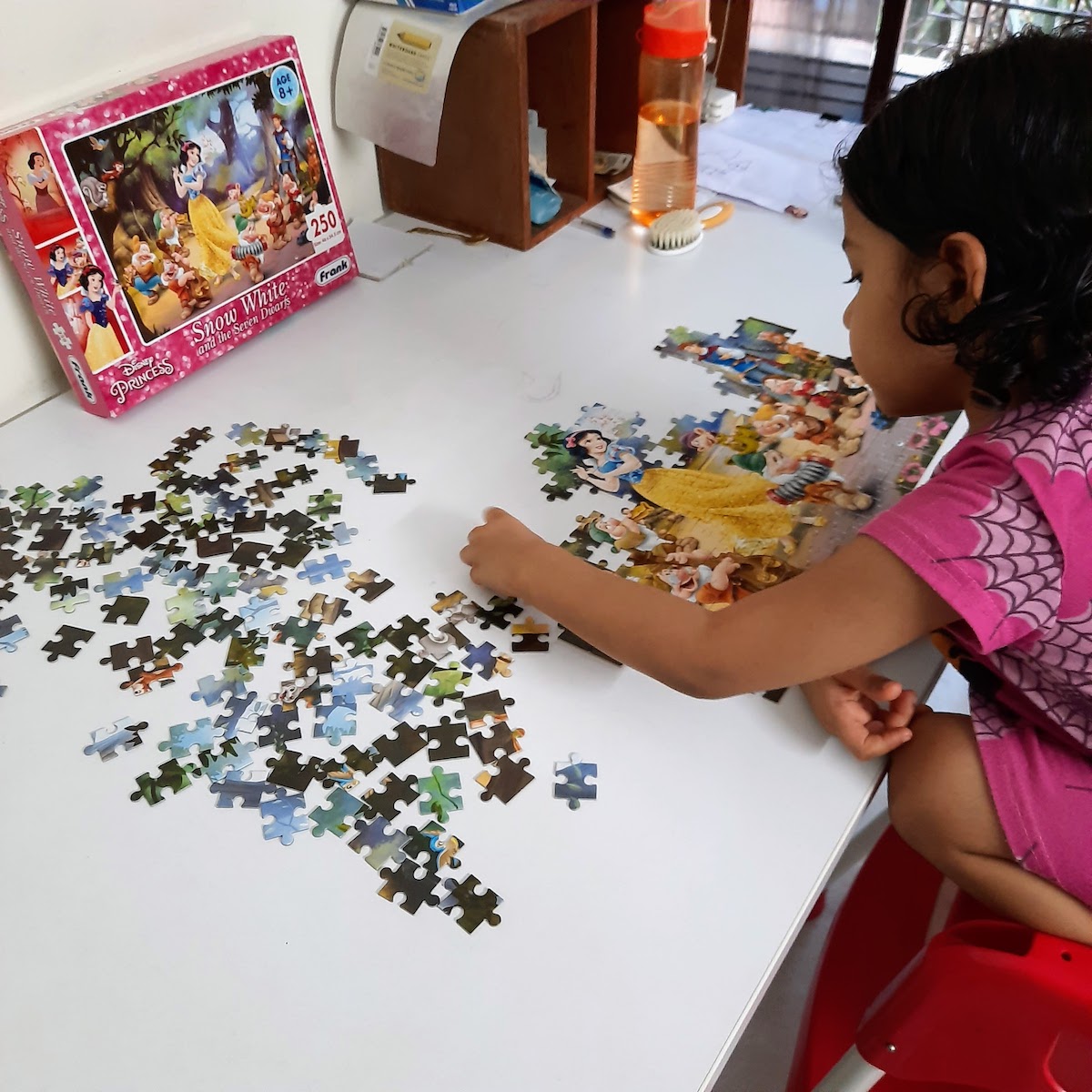
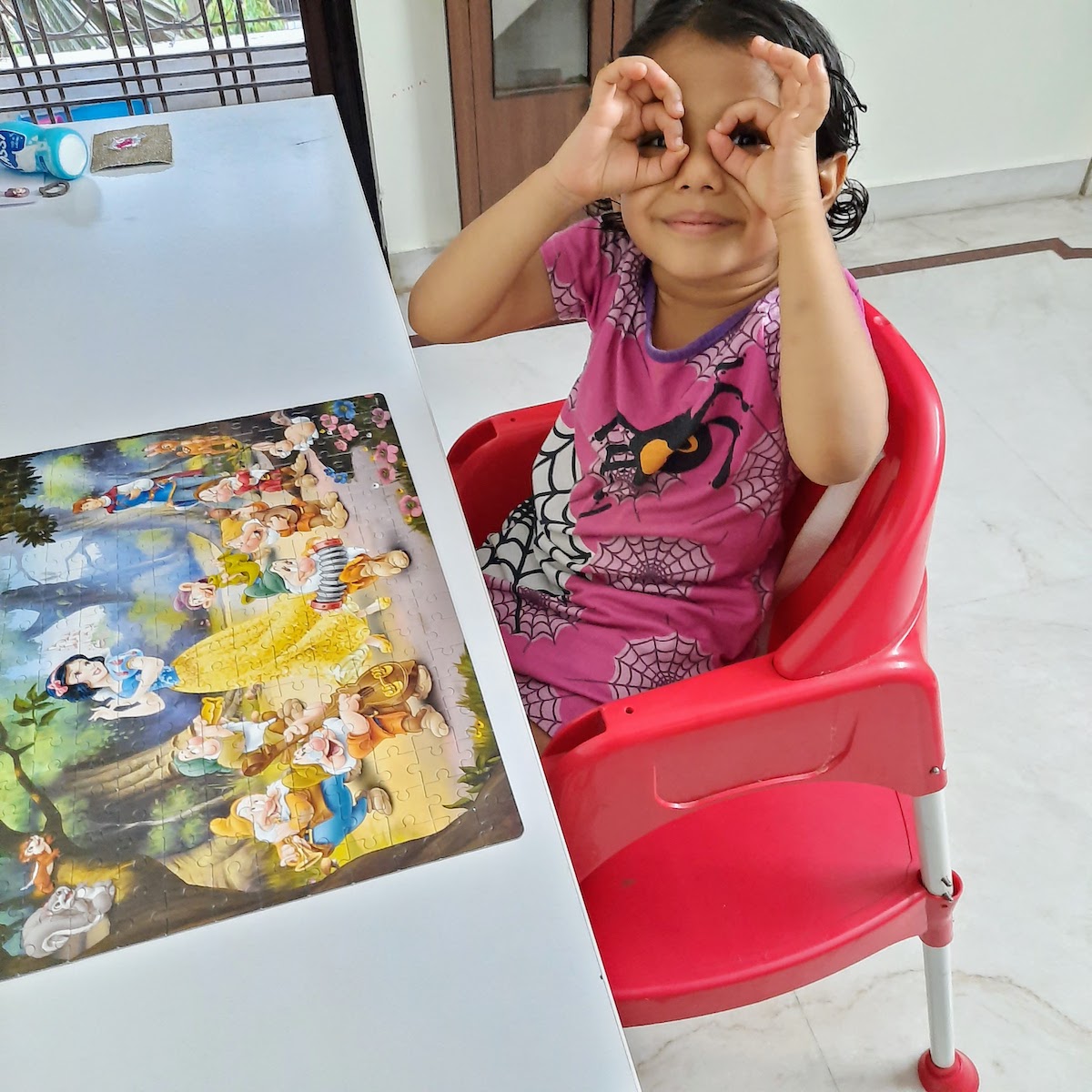
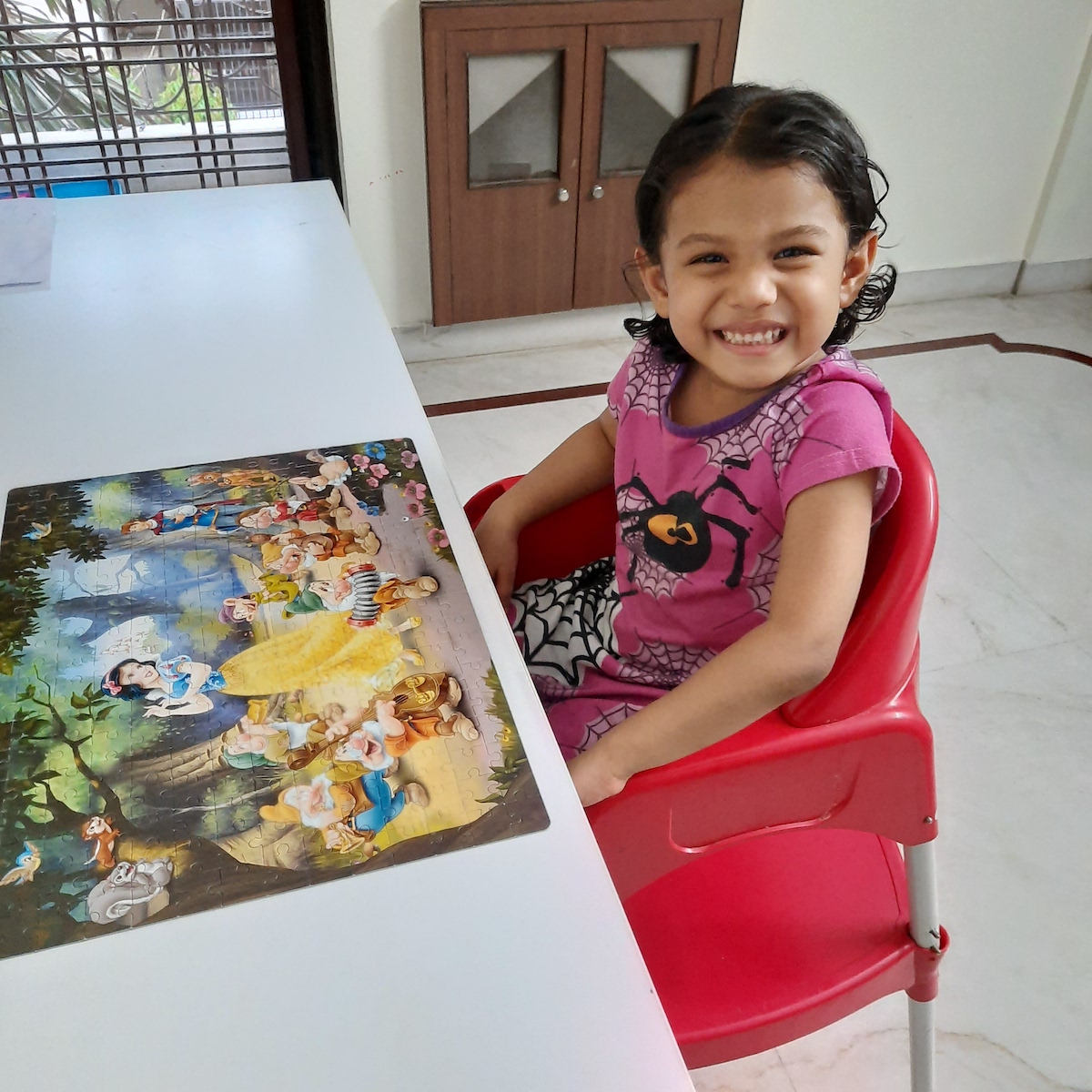
 Copied
CopiedAfter finishing a puzzle, Sabi took a break. Months later, we got her a 500-piece Underwater Puzzle because she liked sea creatures. Sabi embraced the challenge, facing her first 500-piece puzzle.
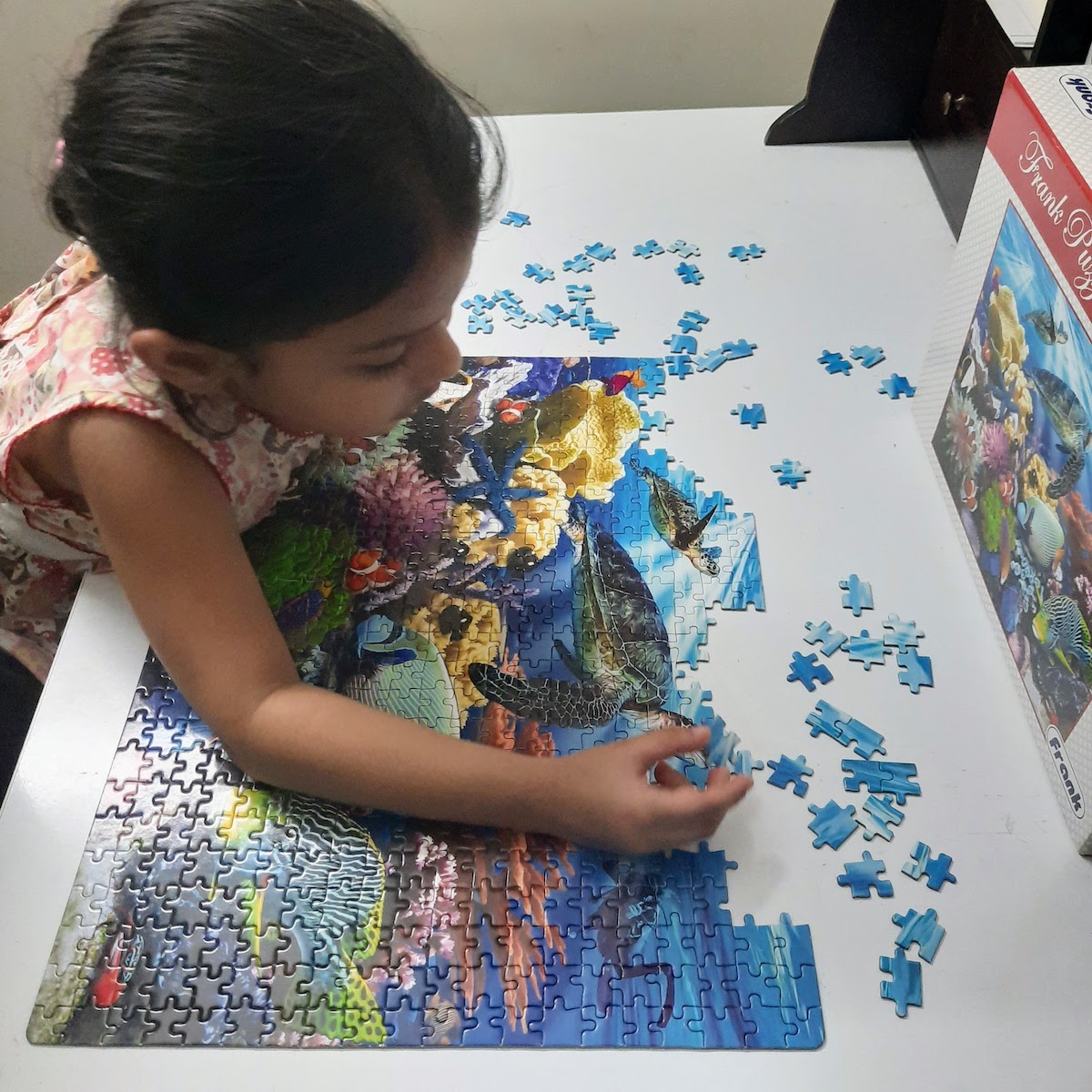
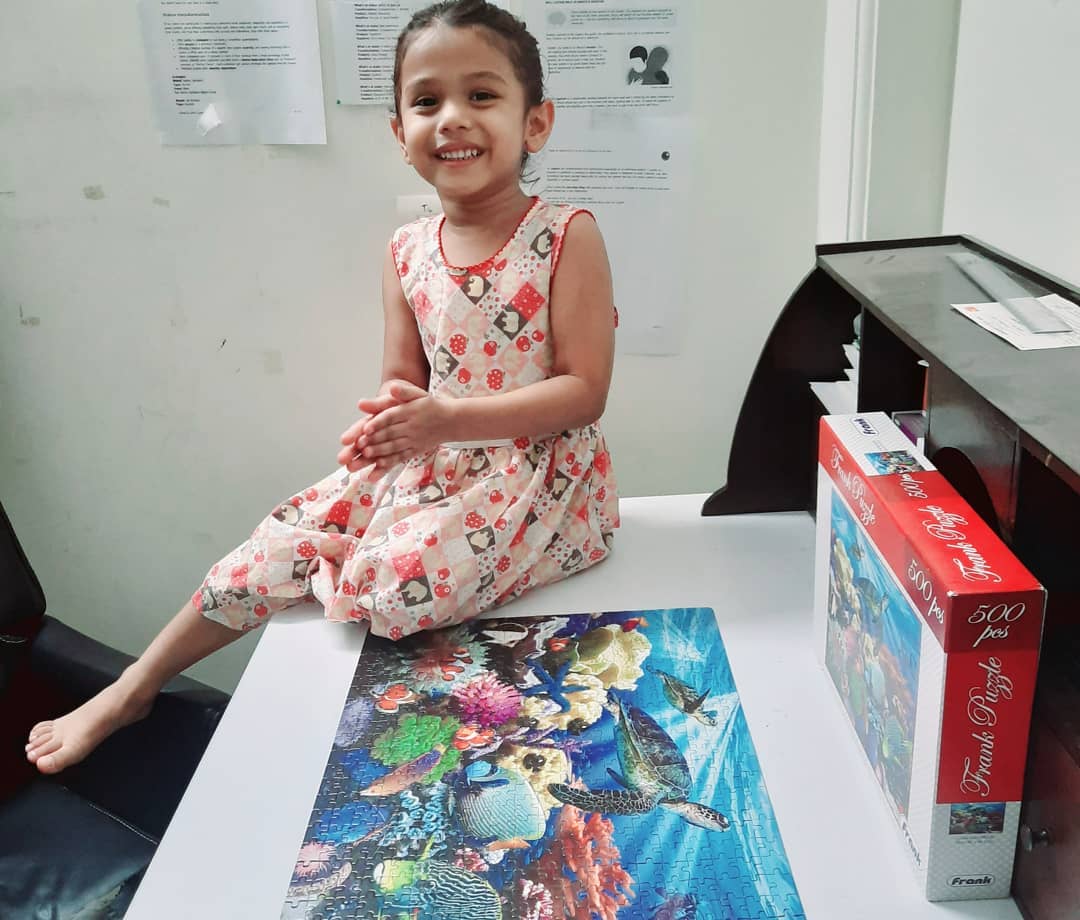
 Copied
CopiedAfter finishing a 500-piece puzzle, one might think of jumping to a 1000-piece one. However, taking it slow, we picked another 500-piece puzzle: an Evening Street Puzzle. Its shading made it a bit trickier.
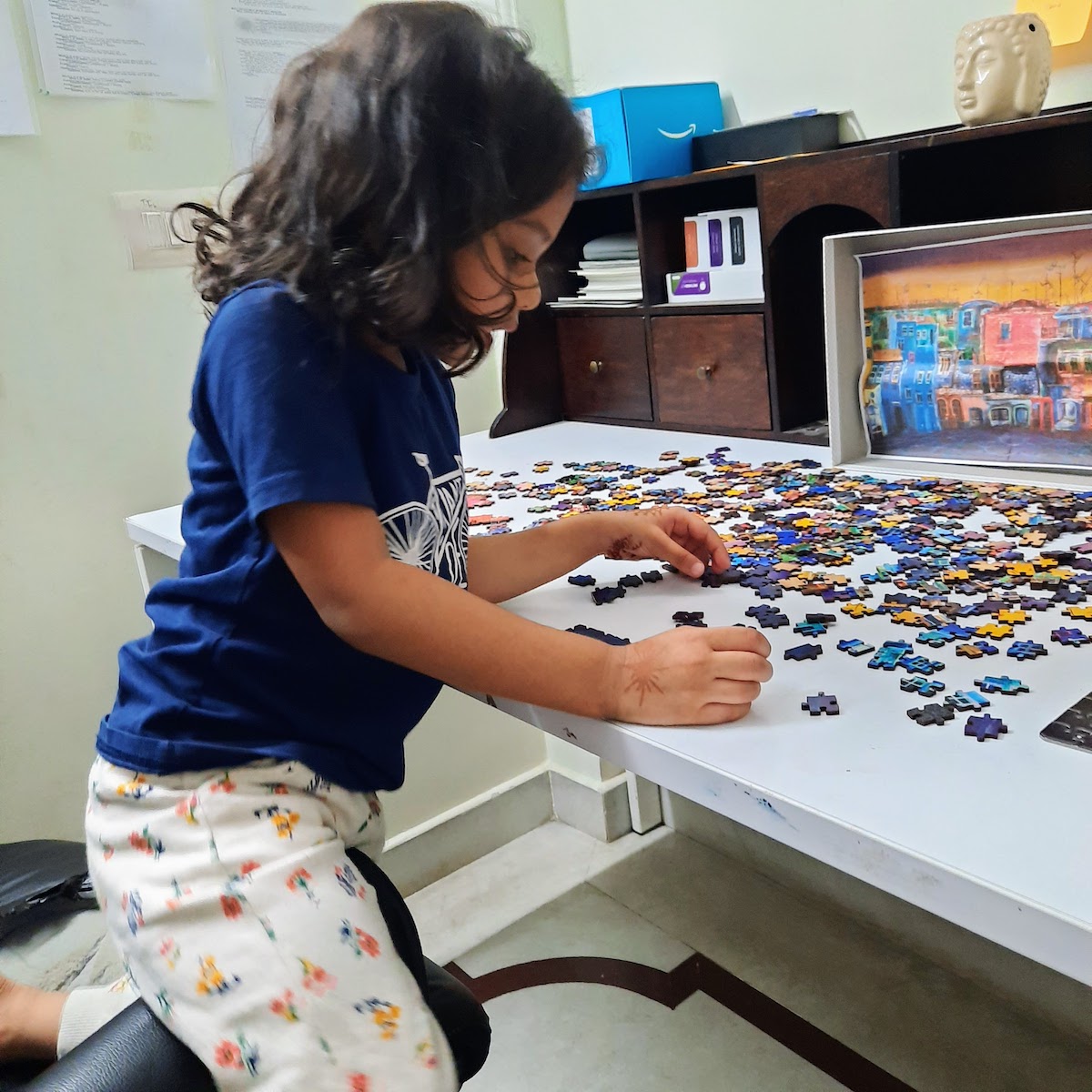
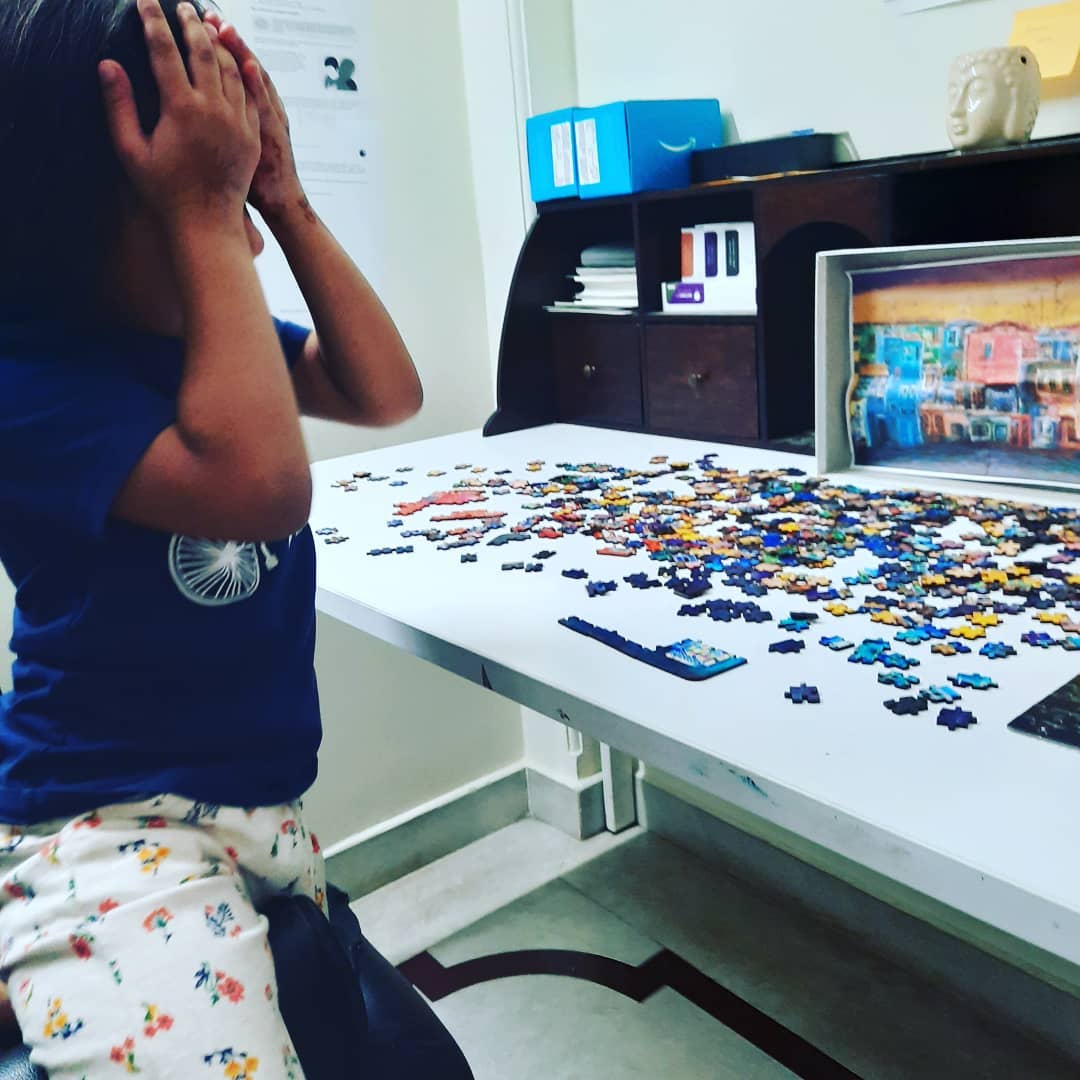
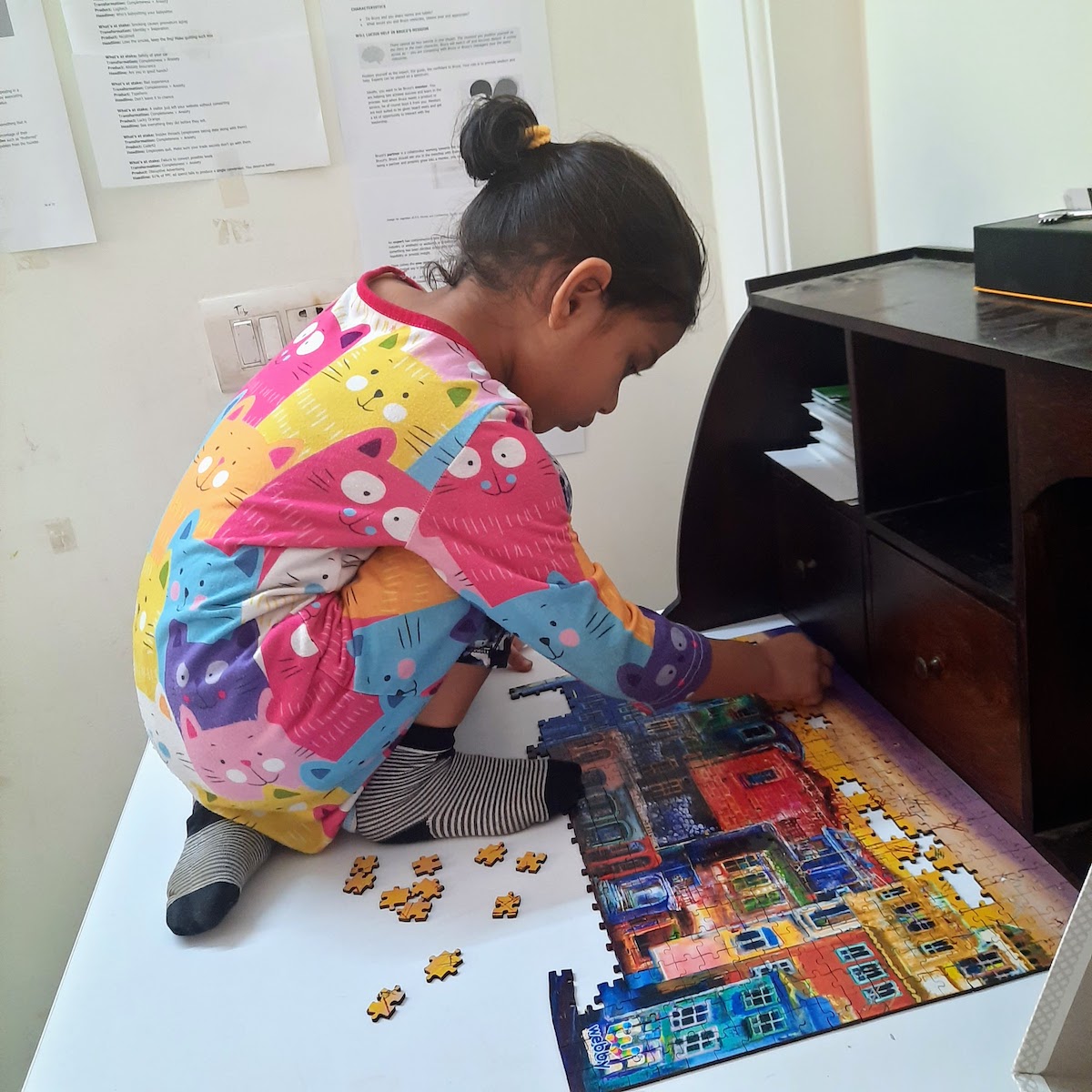
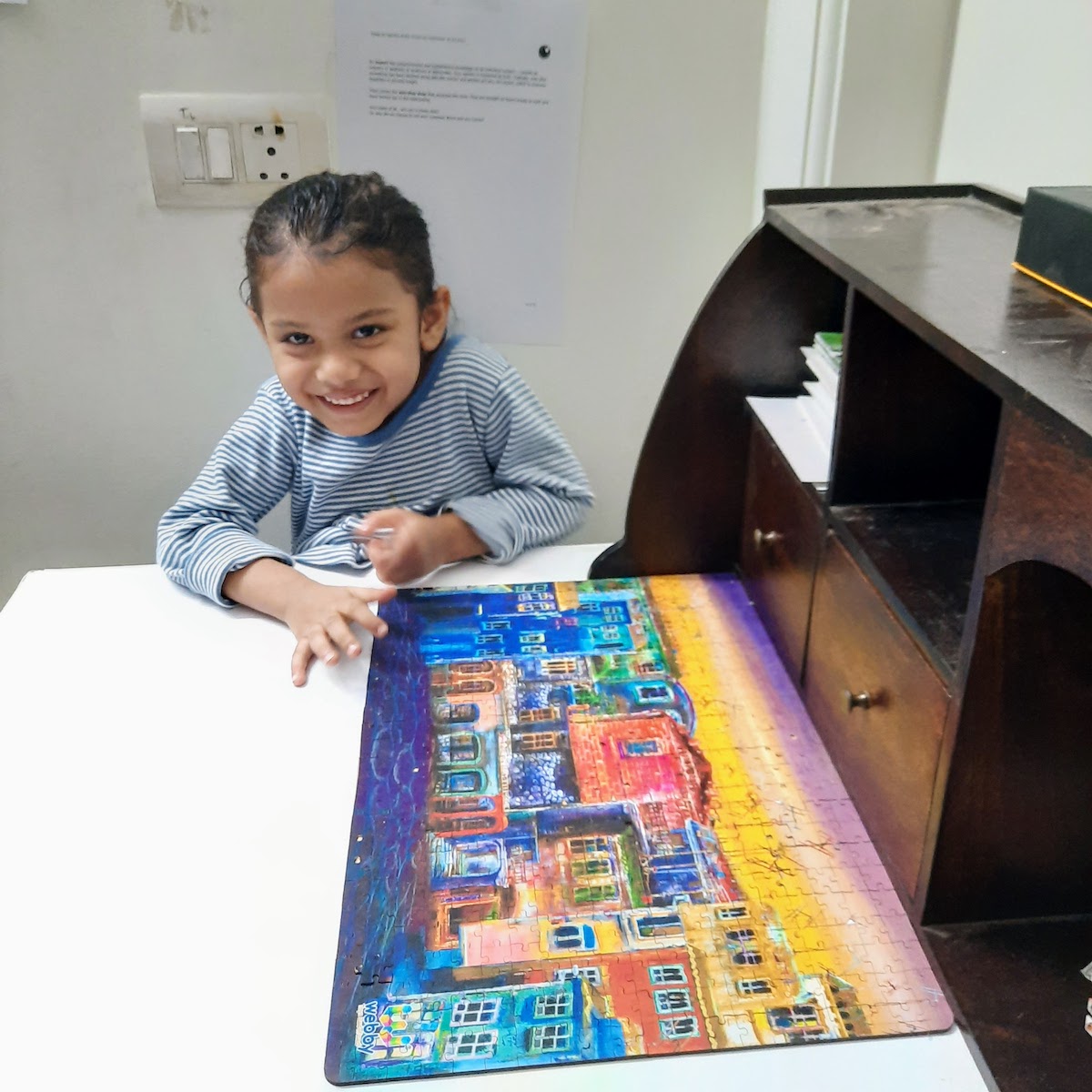
 Copied
CopiedA few months later, Sabi got a 500-piece Hungary Street Puzzle. The idea was to refresh her skills before diving into the bigger 1000-piece challenges.
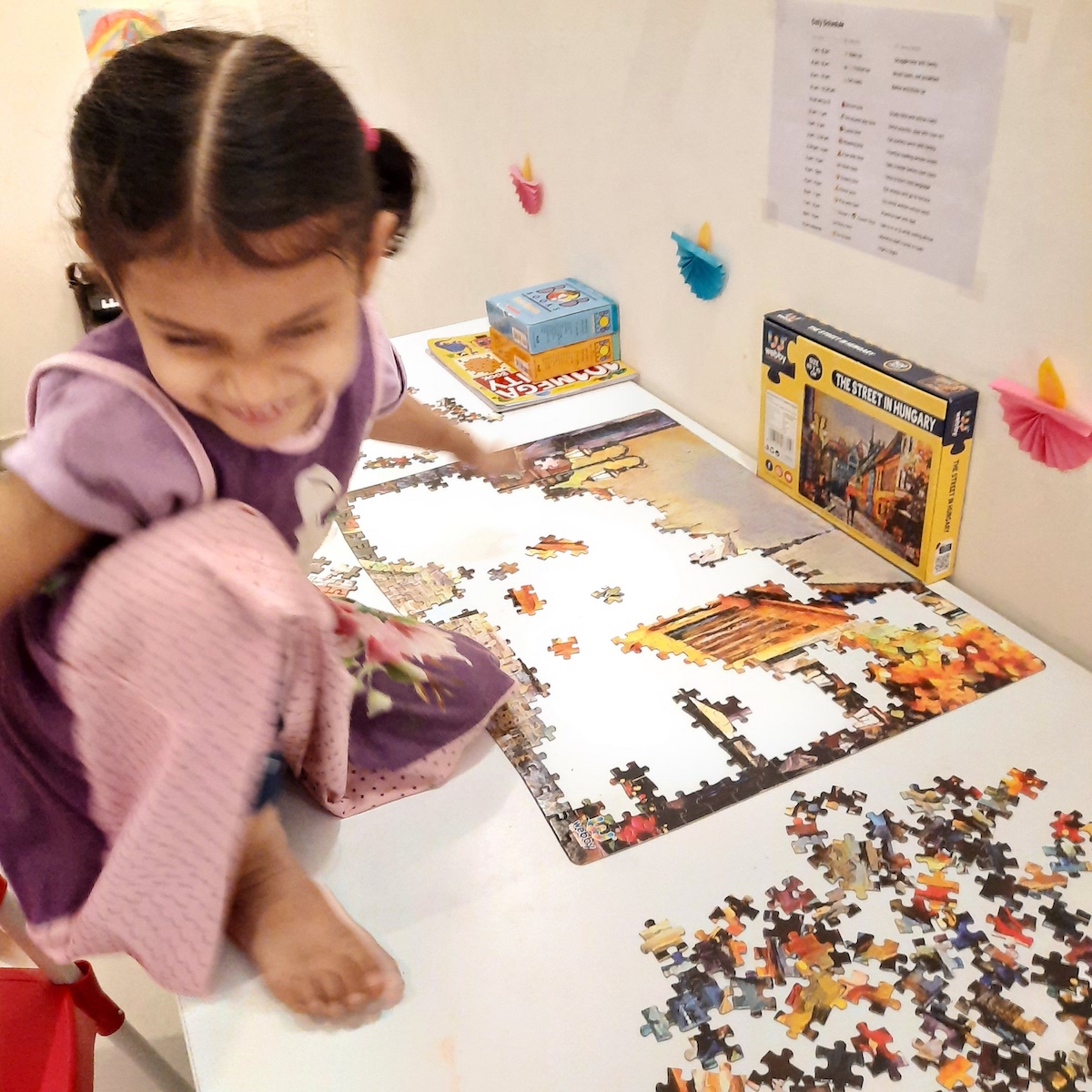
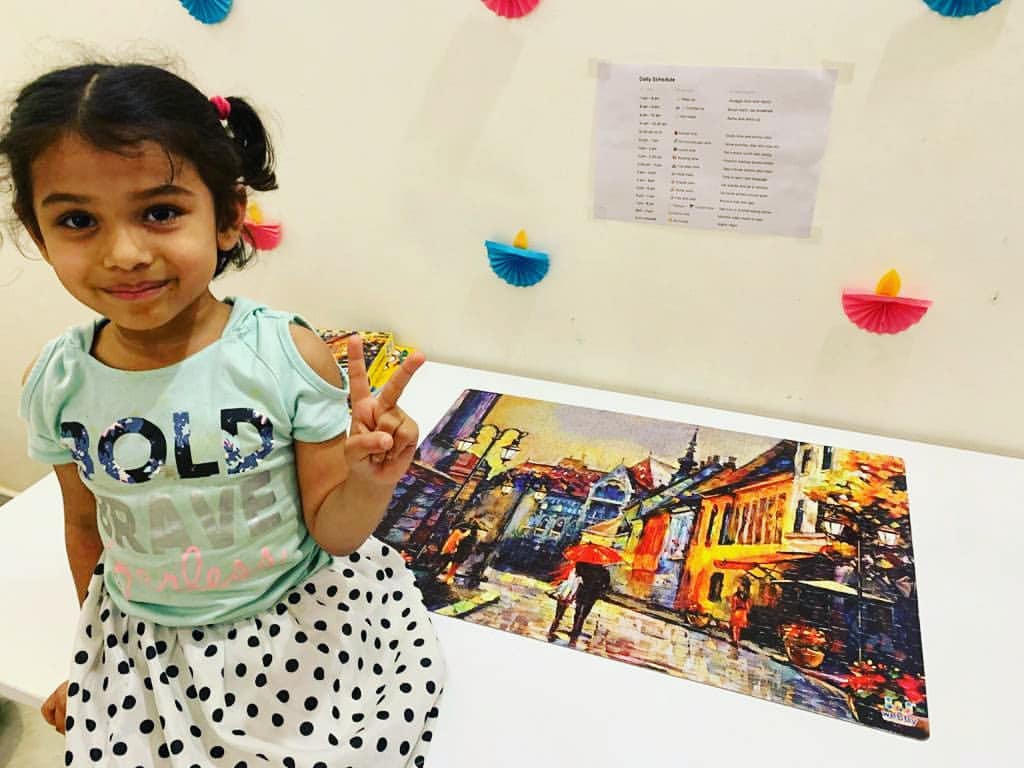
 Copied
CopiedAfter trying puzzles for almost a year, Sabi took on a big 1000-piece Venice puzzle. It took 10 days of hard work with tough bits, like tricky water patterns. But she pushed through, sometimes with a little help and a lot of patience.
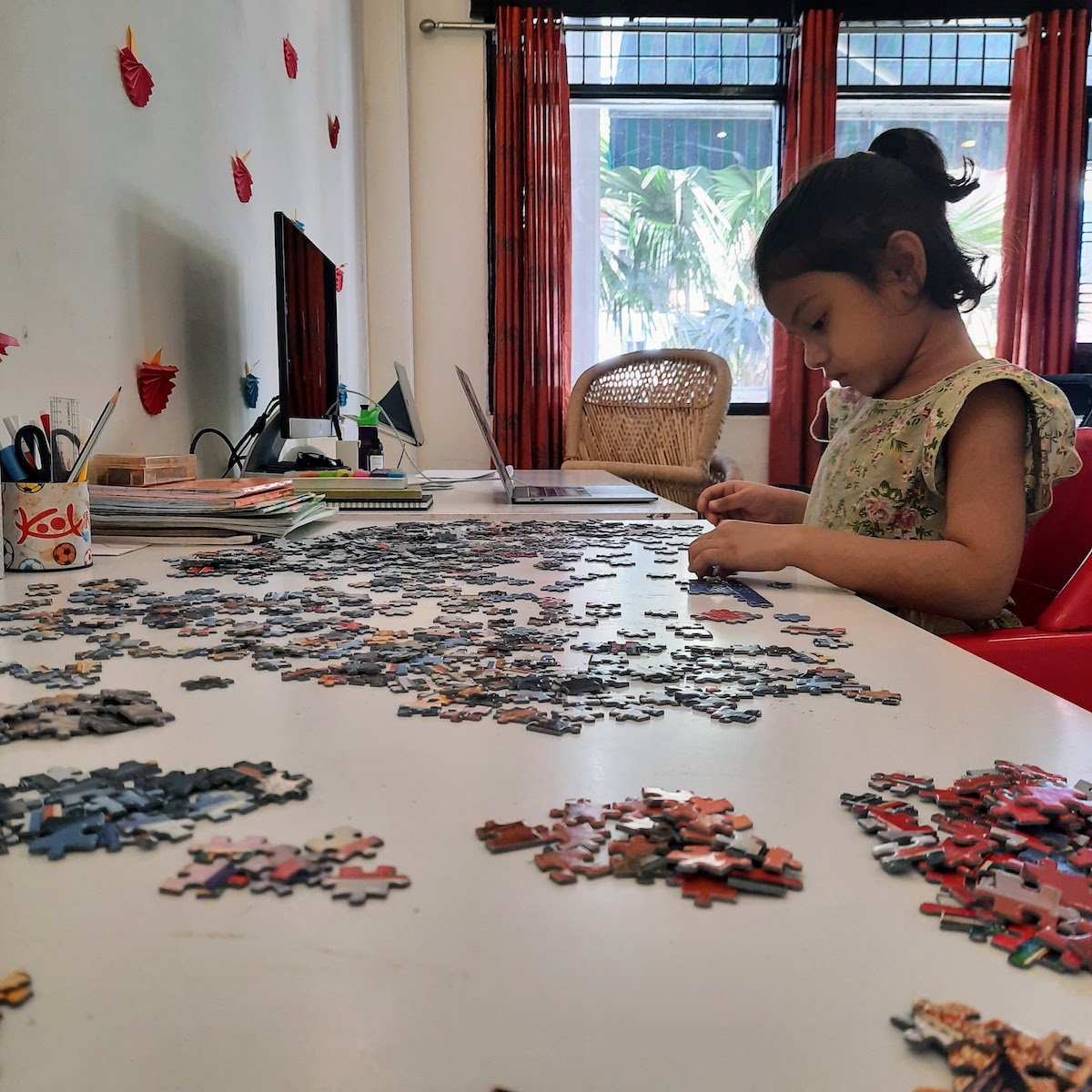
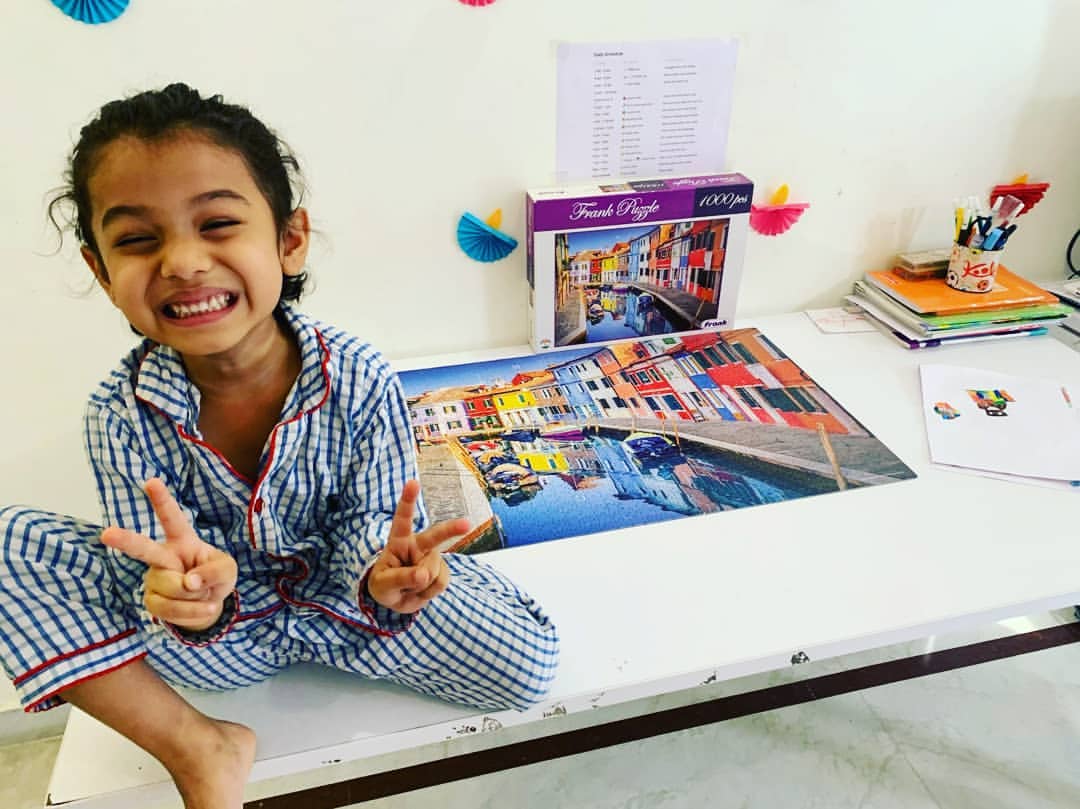
 Copied
CopiedAfter mastering the 1000-piece puzzles, we hesitated to jump to the 2000-piece puzzles. They felt a bit too much. So, we got her the 1000-piece Cobbled Street Puzzle instead.

 Copied
CopiedOver time, we found a cool puzzle that showcased Indian culture and cities, unlike the usual Snow White or Venice puzzles Sabi had done before. We got her a 1000-piece Varanasi Puzzle. Kudos to webbytoys for that unique find!
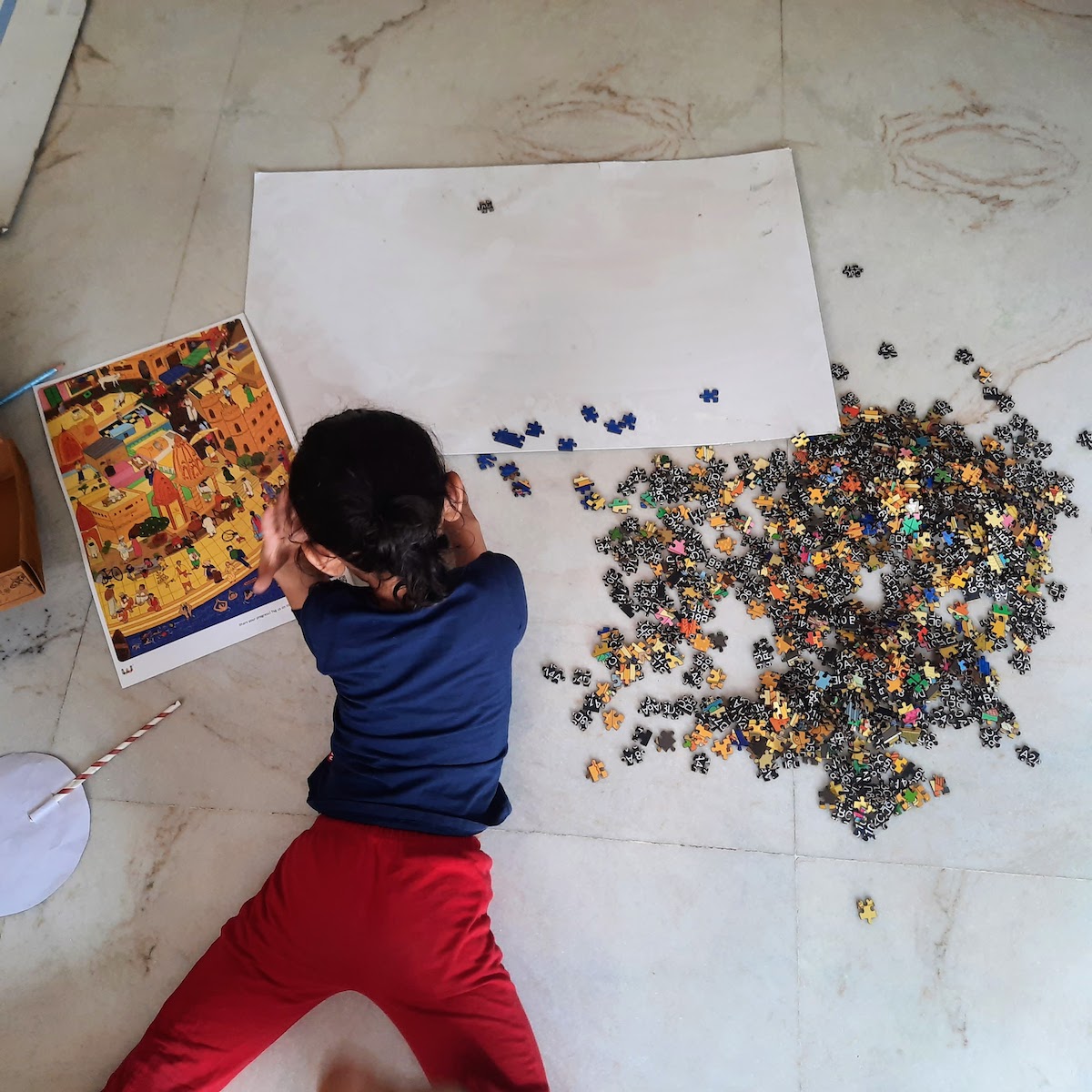
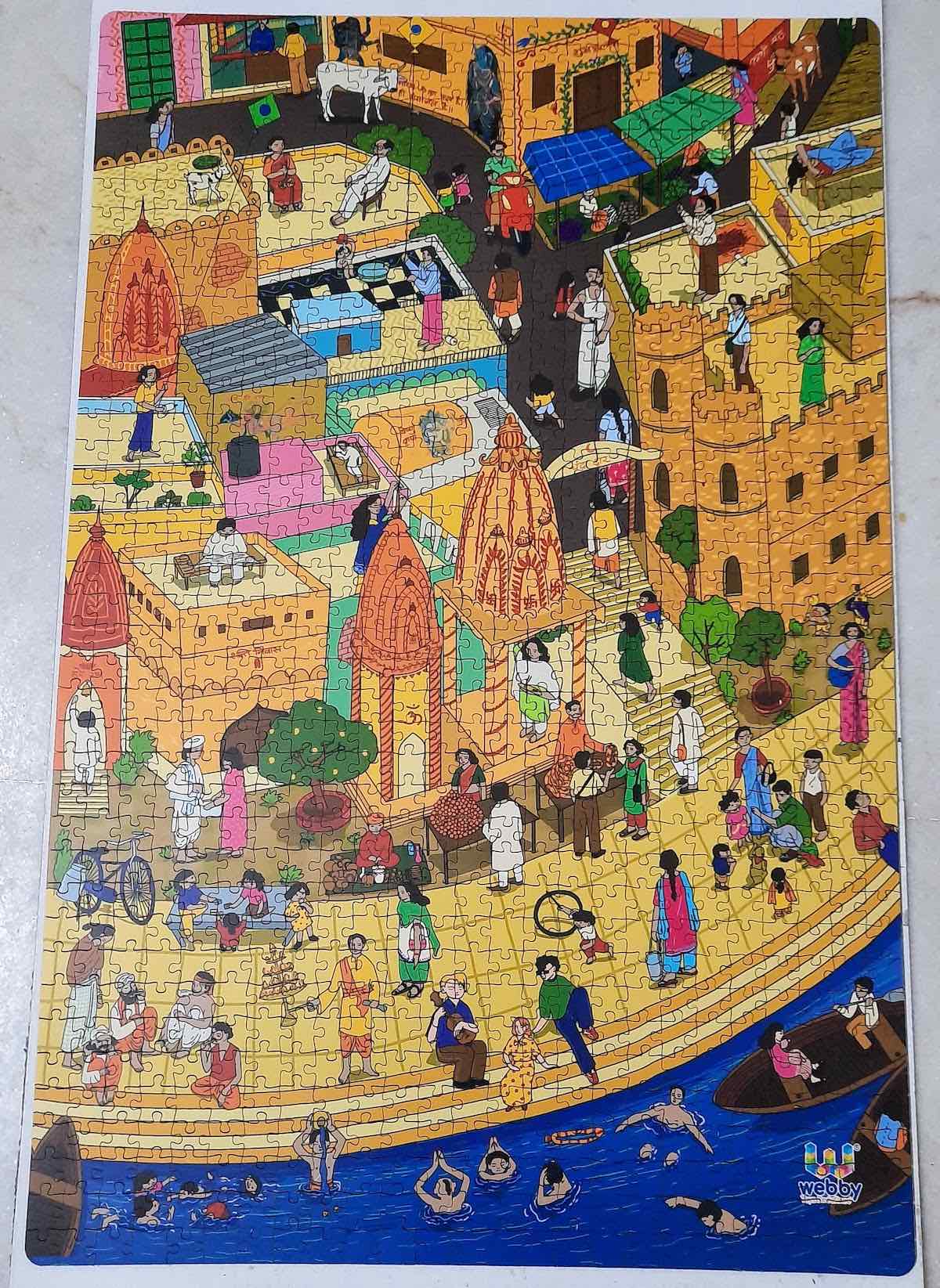
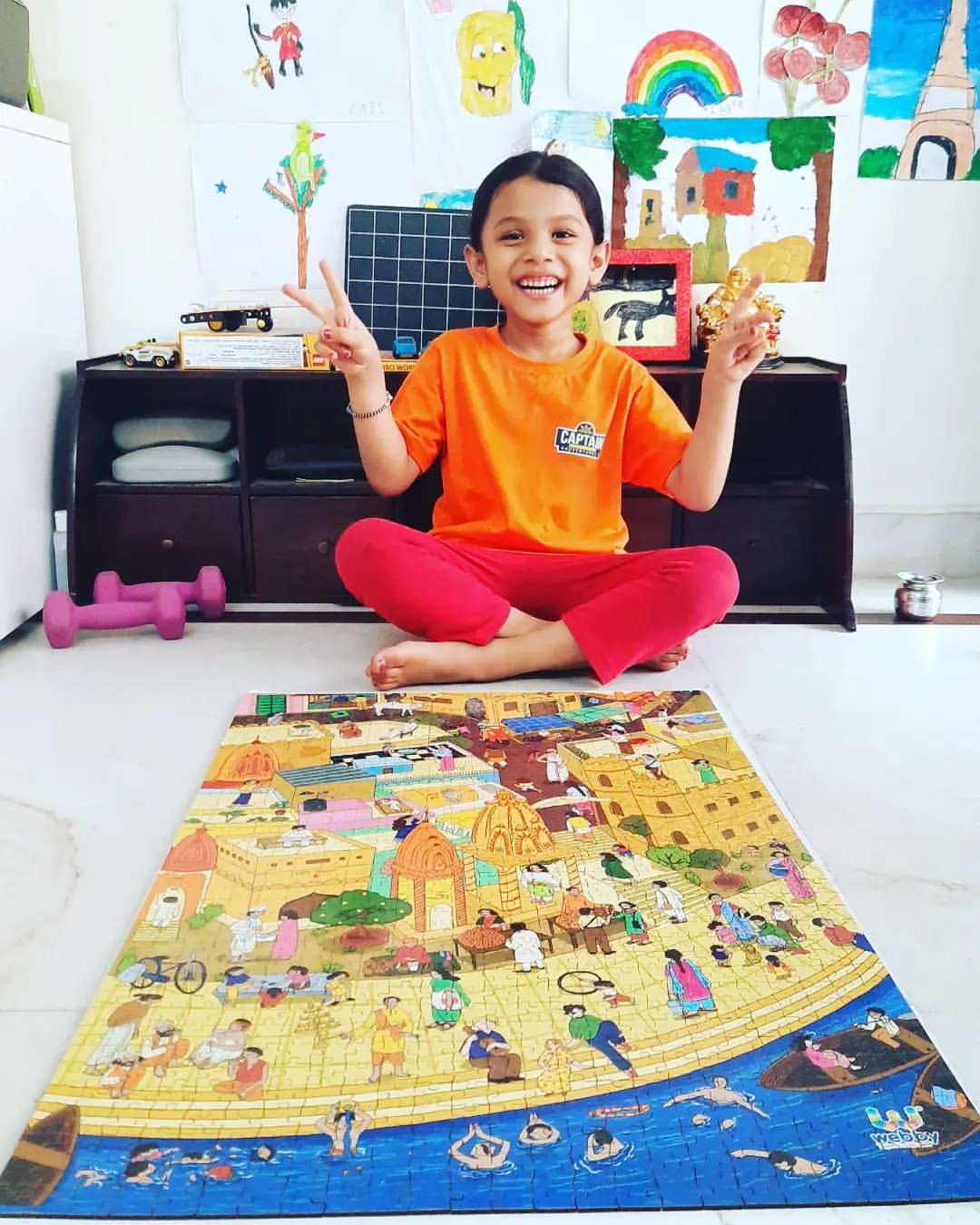
 Copied
CopiedSabi began working on the 2000-piece Wild Animals Puzzle in mid-November, and it took her an impressive month and a half to complete.
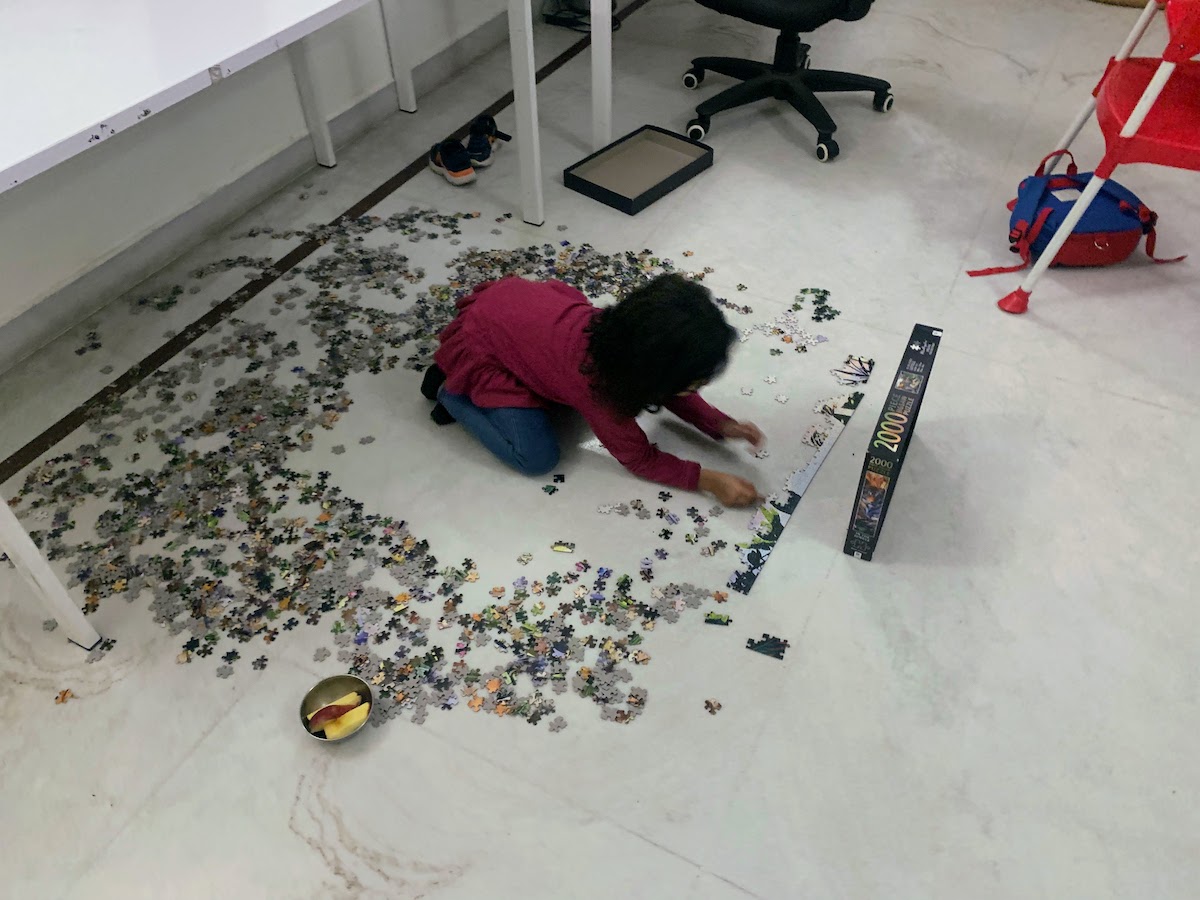
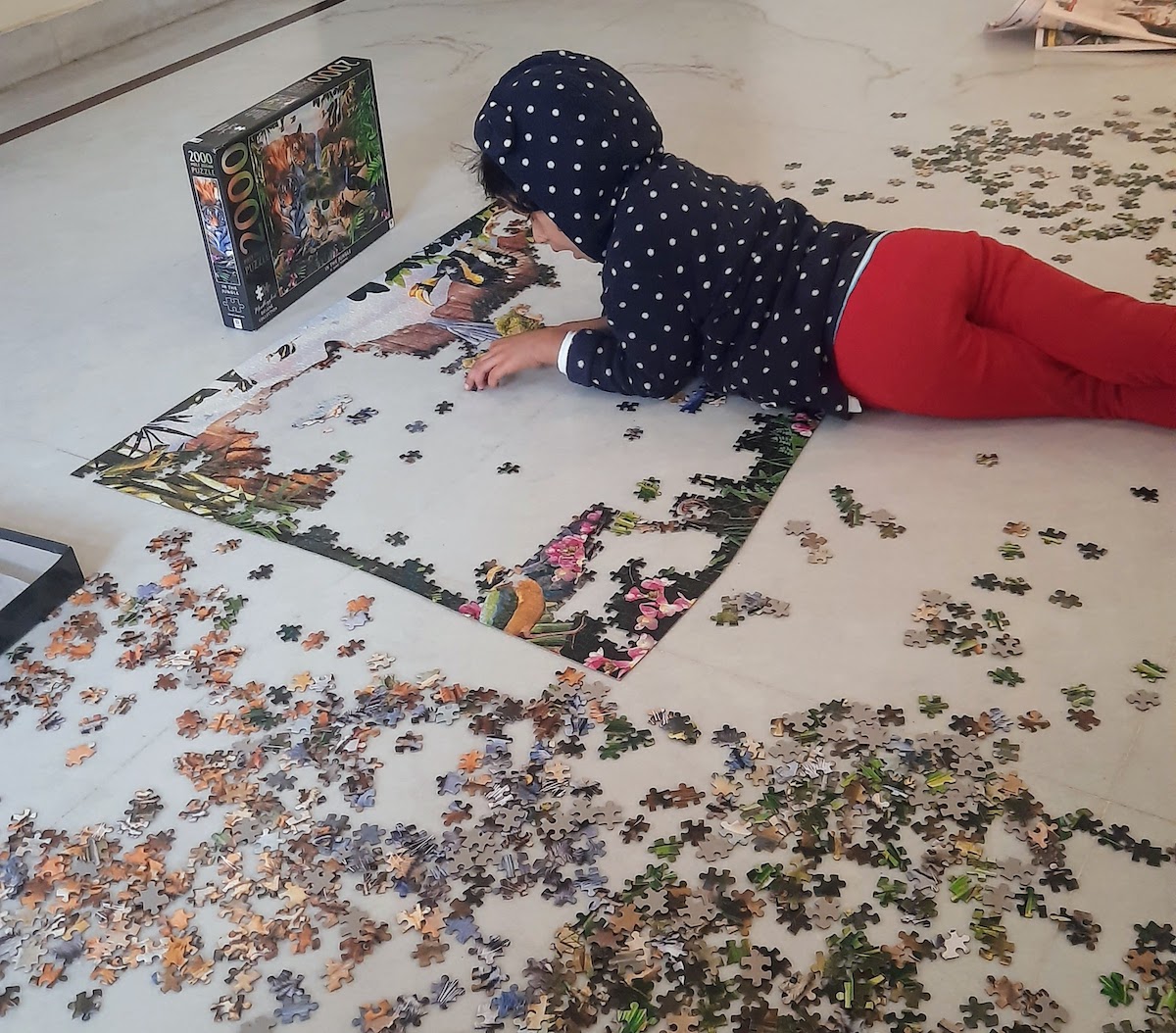
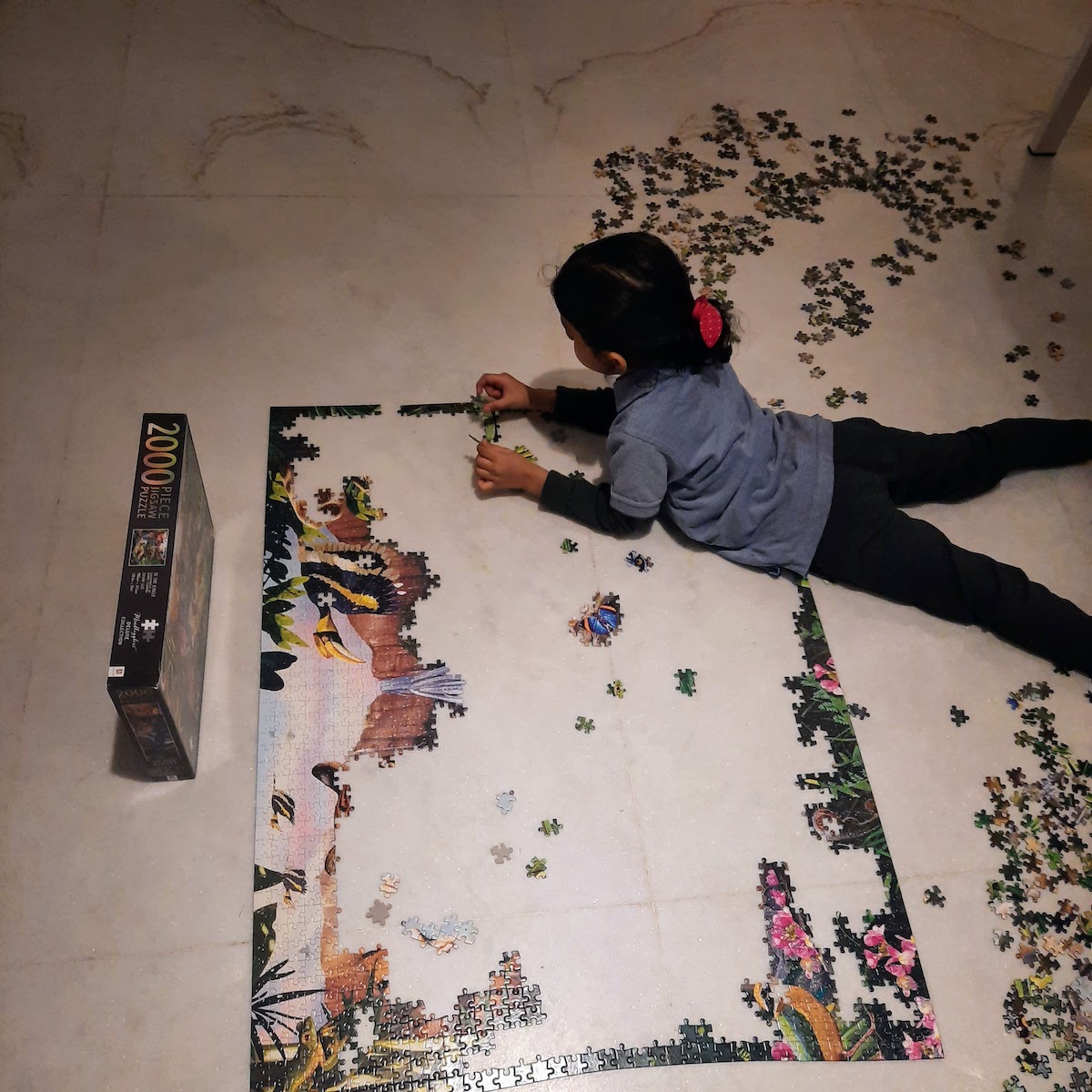
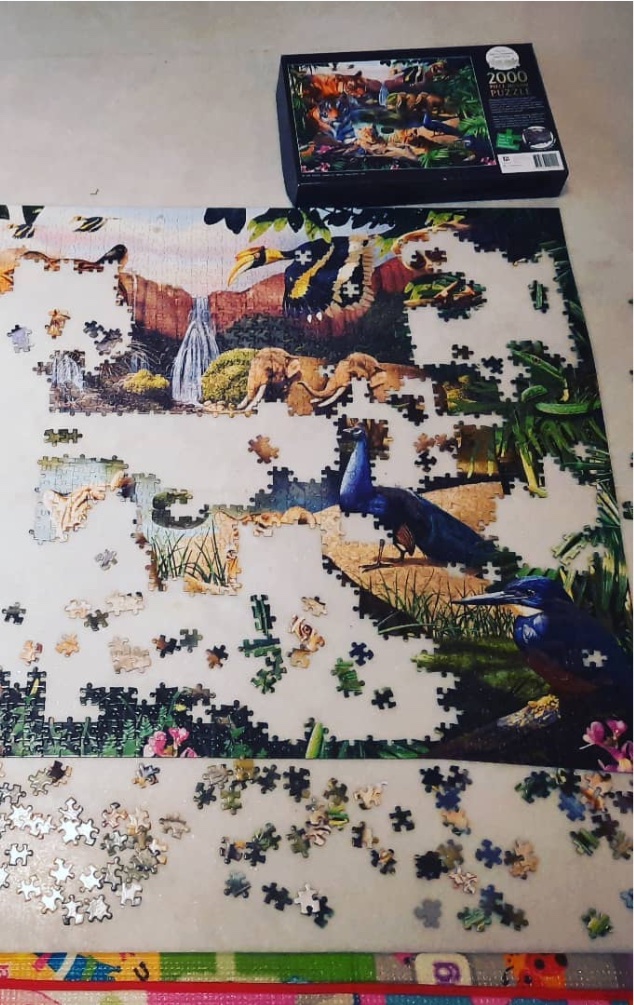
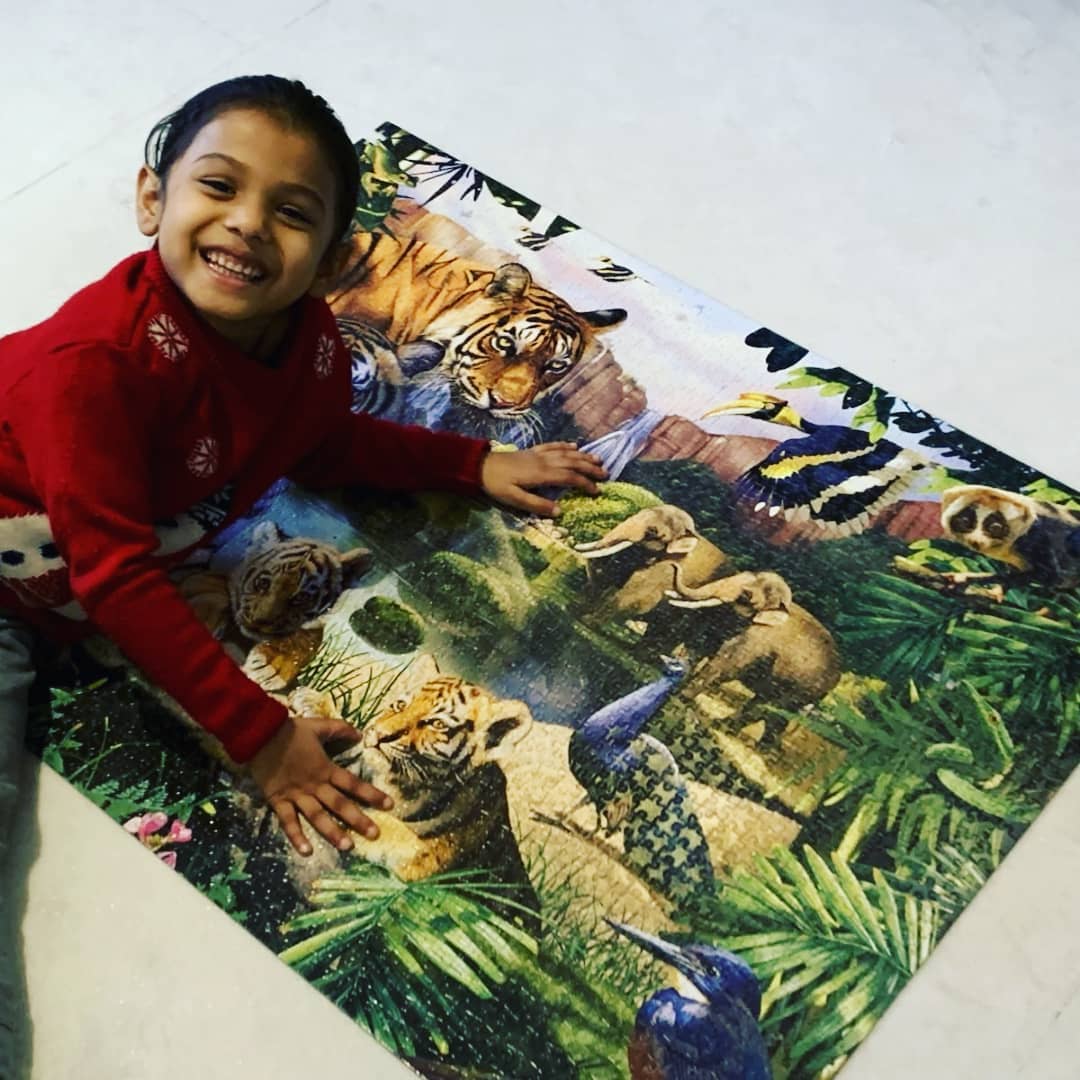
 Copied
CopiedMemorializing the Feat
“Train to focus on one thing for long! Yet recognize that all work will always remain: incomplete, imperfect, and impermanent.”
The puzzles Sabi has finished now grace our home. A 2000-piece puzzle proudly hangs in our living room, and a 1000-piece depiction of Varanasi adorns our dining area. We’ve also framed snapshots of Sabi working on them to commemorate her dedication.

How To Solve Puzzles
Introducing puzzle-solving to young minds can be challenging. Here are the strategies that worked for us, based on our experience:
- Inclusive Choices: Sabi’s input was paramount at every stage, from selecting to setting up the puzzles. Her preferences in colors and themes informed our purchases.
- Dedicated Space: Recognizing that puzzle-solving is a marathon, not a sprint, we allocated a space in our home where a work-in-progress puzzle could remain undisturbed.
- Phasing Complexity: We started with a 25-piece puzzle and gradually increased the difficulty, moving through 100, 250, 500, and 1000 pieces, up to 2000 pieces. Within each piece-size, we initially chose puzzles with distinct designs to help Sabi distinguish the pieces. As her skills improved, we introduced more complex designs.
- Consistency: We emphasized regular engagement over duration. A few minutes each day was preferable to long, irregular intervals.
- Breaks are Okay: After completing a puzzle, Sabi could pause before starting a new one. This allowed her to return with renewed vigor.
- Facilitated Solving: Instead of solving the puzzle for her, we prompted her with questions, fostering an environment of interactive learning.
Using these strategies, we were able to keep Sabi intellectually stimulated during the challenging times of 2020, while also ensuring that she acquired essential life skills in a fun and enjoyable way.
Starting Your Puzzle Journey?
Here are some puzzles we introduced to Sabi in the early stages:


